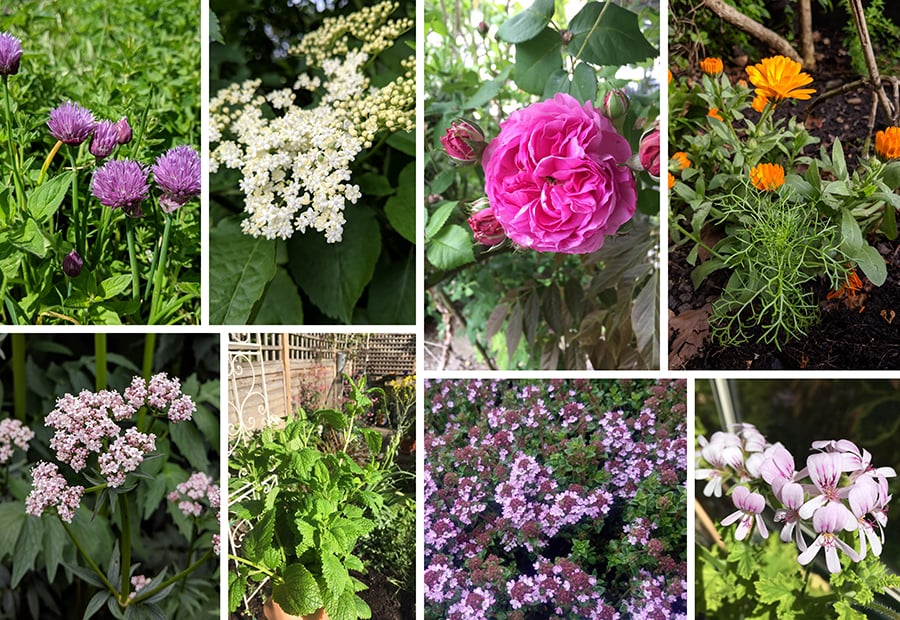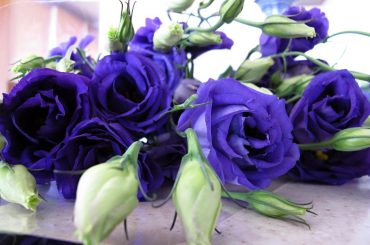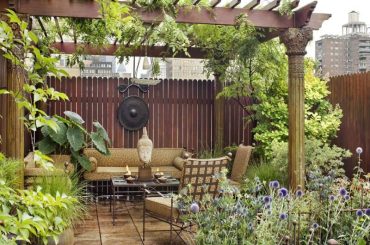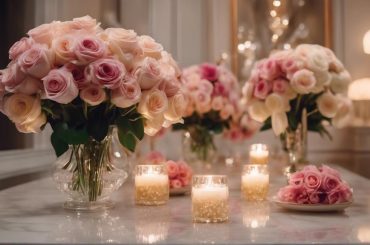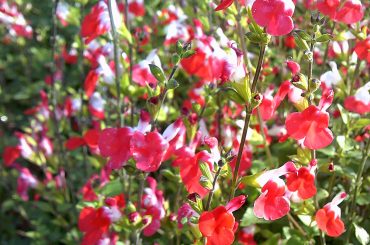Table of Contents
Do you want to spruce up your garden with something both beautiful and useful? Consider planting some flowering herbs! These plants have beautiful foliage and a variety of brilliant colours, and they have used in both food and medicine. For instance, while plants like chamomile have been traditionally utilised for their medical benefits, herbs like thyme and oregano are frequently used in cooking to give flavour and scent to dishes.
Flowering herbs are not only beautiful, but they also serve a purpose beyond just aesthetic appeal. With so many wide varieties available – from popular favourites to lesser-known treasures – you are sure to find a flowering herb that suits your tastes perfectly.
In this blog, we will explore 22 different flowering herbs that are sure to elevate your gardening game.
So, if you are ready to take your gardening game up, let’s dive into the world of flowering herbs
1. Lavender
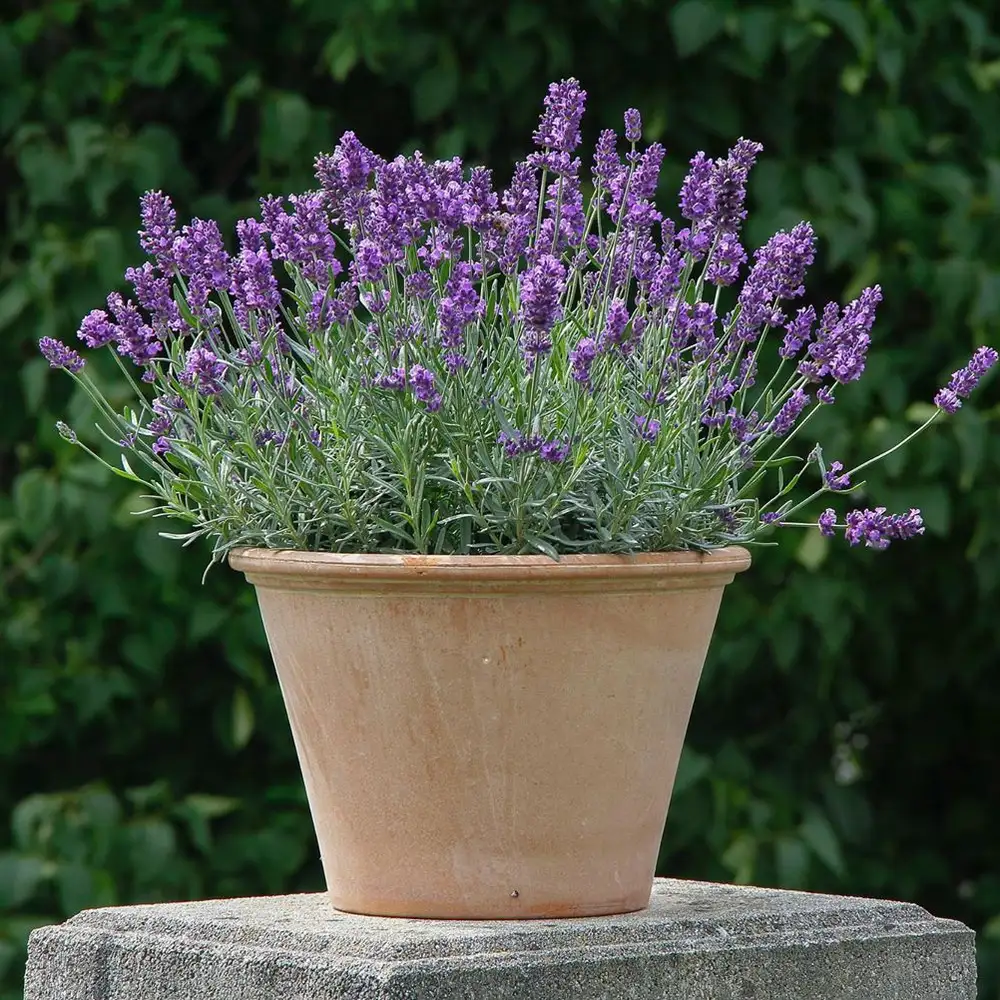
The classic flowering herb, lavender is stunning with its rich purple blossoms and distinctive perfume. Any garden must have it because of both its beauty and the many advantages it offers. This bushy herb’s circular form makes it ideal for small borders or hedges, and its gorgeous blossoms can be any colour, from white to midnight blue. Lavender is highly hardy once planted and can resist drought, making it the ideal plant for gardeners with limited time to dedicate to maintenance. It’s a magnificent plant with a long lifespan that can draw bees and butterflies to your yard.
2. Chives
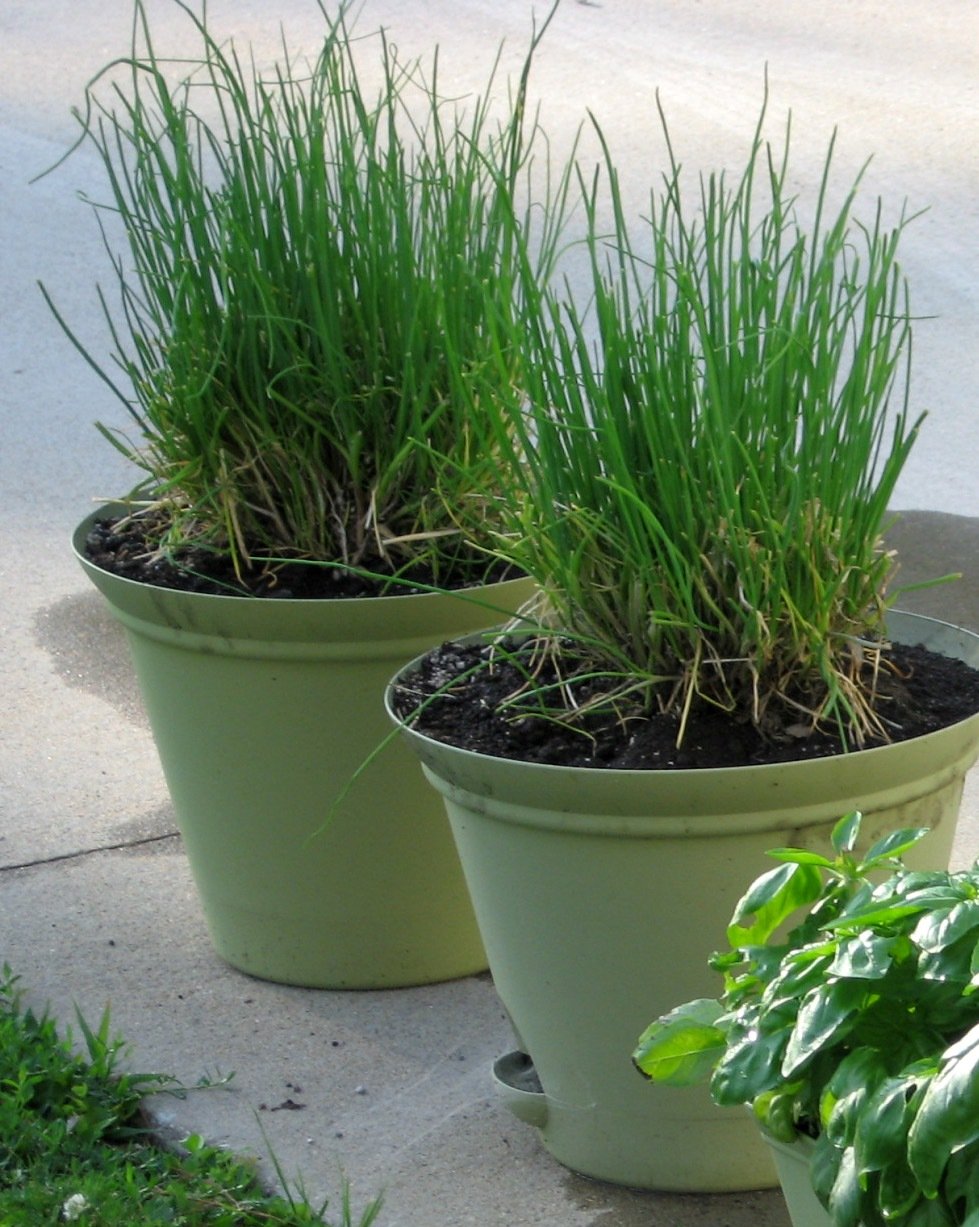
You could initially mistake chives for common grass when you first encounter them. However, when they begin to blossom, your garden will come to life! Chives, like other alliums, create these adorable small circular flowers. They resemble little purple pompoms and can add character to your yard. In addition to looking attractive, they can draw beneficial pollinators like bees and butterflies. Additionally, some pests are deterred by the plants’ aroma. Therefore, chives are a plant to think about if you’re seeking one that will benefit your garden while also adding colour and energy.
3. Dill
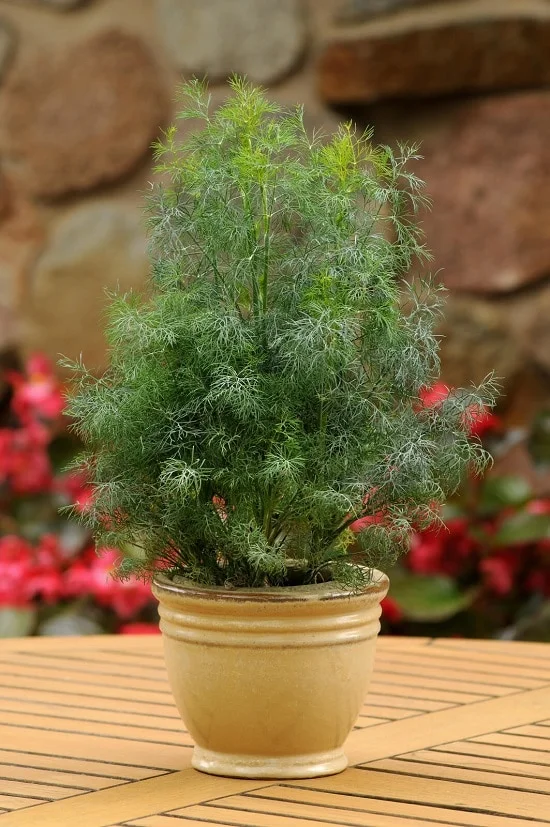
Prepare your lawn for a splash of colour! Tall stems covered in feathery foliage give way to gorgeous golden flowers when the July heat sets in. Dill is a versatile herb that can be added to your kitchen garden to improve the flavour of a variety of foods, including salads and pickled cucumbers. This flowering herb can reach heights of three feet. Dill grows well in sunny garden locations and needs little upkeep. Dill, a popular culinary spice, may add a splash of colour to your garden in the summer when it is allowed to bloom. These umbels, which are large clusters of little yellow flowers, are what give dill their name.
4. Thai Basil
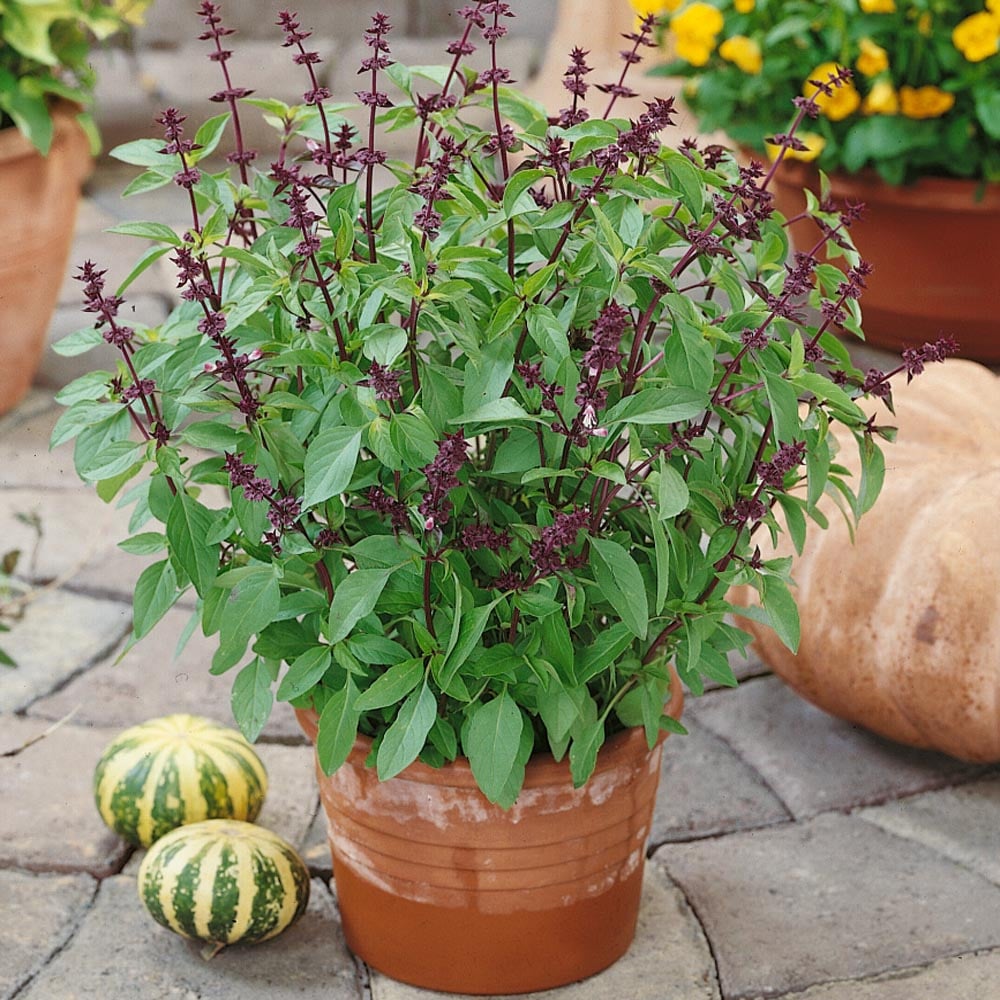
Thai Basil, this exotic beauty has it all: an aromatic scent of liquorice, gorgeous reddish-purple spikes that bloom in late summer and leaves with a distinct flavour that sets it apart from traditional Basil. Although the flavour of Thai Basil may decrease once the impressive blooms emerge, it remains a valuable addition to your garden or container, especially if you’re looking to enhance its visual allure. Similar to other types of basil, Thai Basil requires ample sunshine and water. So, why opt for regular basil when you can cultivate Thai Basil, an exotic beauty that offers both a striking appearance and delightful flavour?
5. Bee Balm
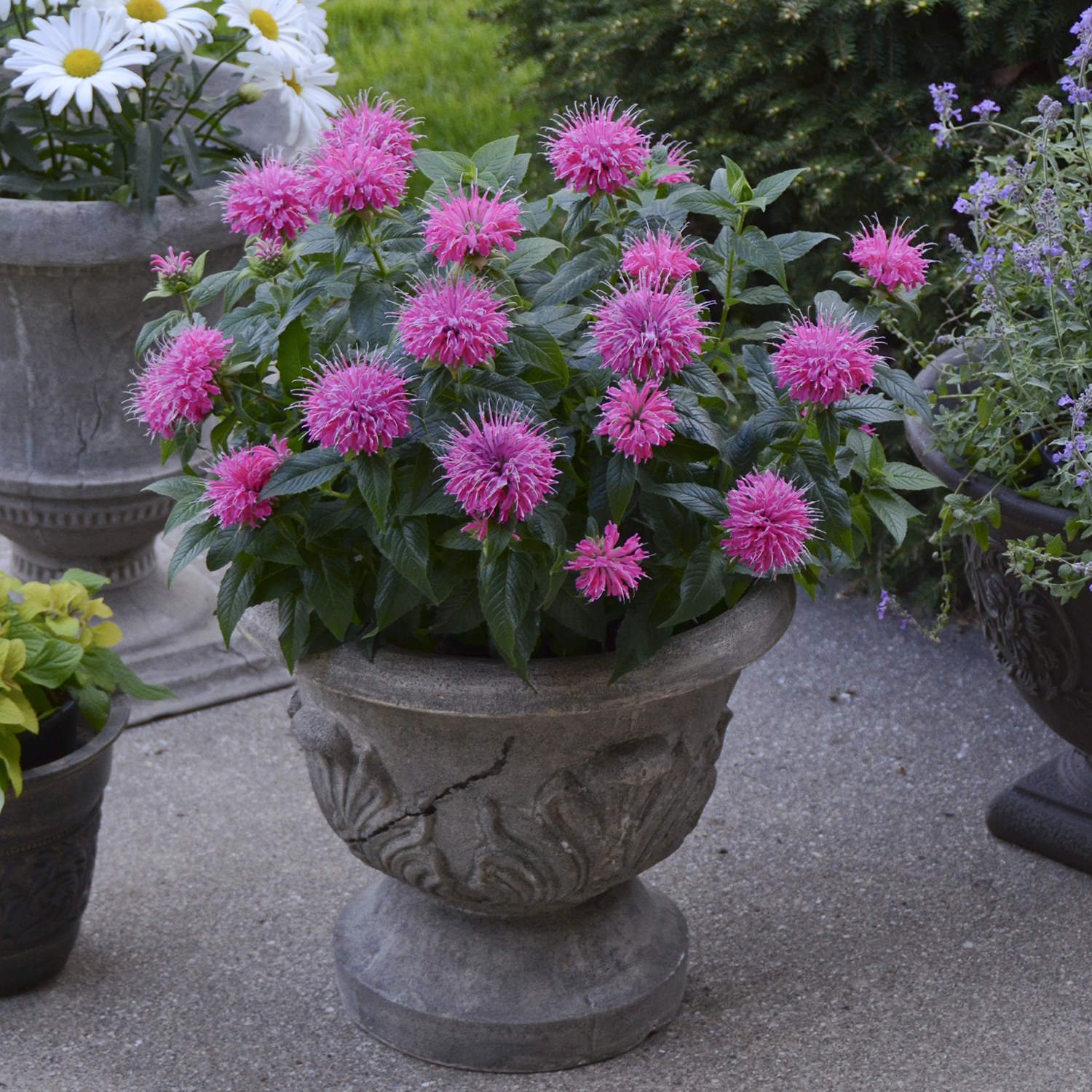
This flowering plant with many skills does more than just create gorgeous blossoms in red, pink, and purple hues. It is a necessity for any garden that wants to draw bees, hummingbirds, or butterflies because it is also a favourite of these lovely insects. And with its bright puff-shaped flowers, it will impress anyone who sees it. If you want to mix things further, consider adding some pink or purple bee balm to your garden. You could even grow all three varieties for your backyard’s colourful and tasty herb garden. So why not add some bee balm to your garden and discover all the fantastic things this plant can do?
6. Echinacea
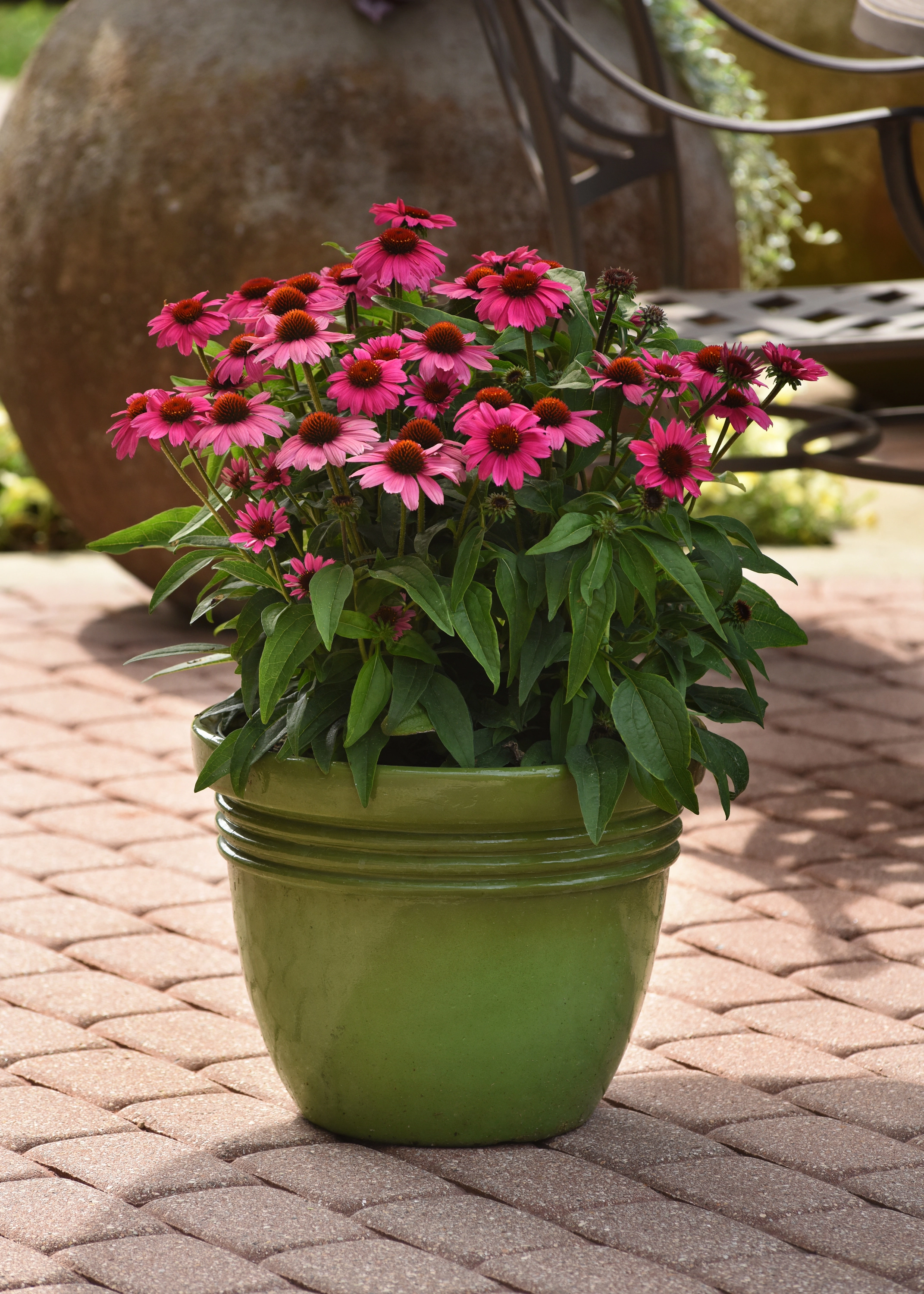
Get ready to add a splash of colour to your garden with Echinacea, also known as coneflower! These flowering herbs are gorgeous, with their large domed daisy-like blooms in white, pink and even yellow. They also attract pollinators like bees and butterflies. They grow to one to two feet tall, and Echinacea blooms throughout the summer. Even after the petals fade, the centre domes remain, adding russet and copper hues to your garden through the fall. While Echinacea thrives near water streams, it can adapt well to various environments with proper irrigation. Add Echinacea to your garden and enjoy its beauty and health benefits!
7. Chamomile
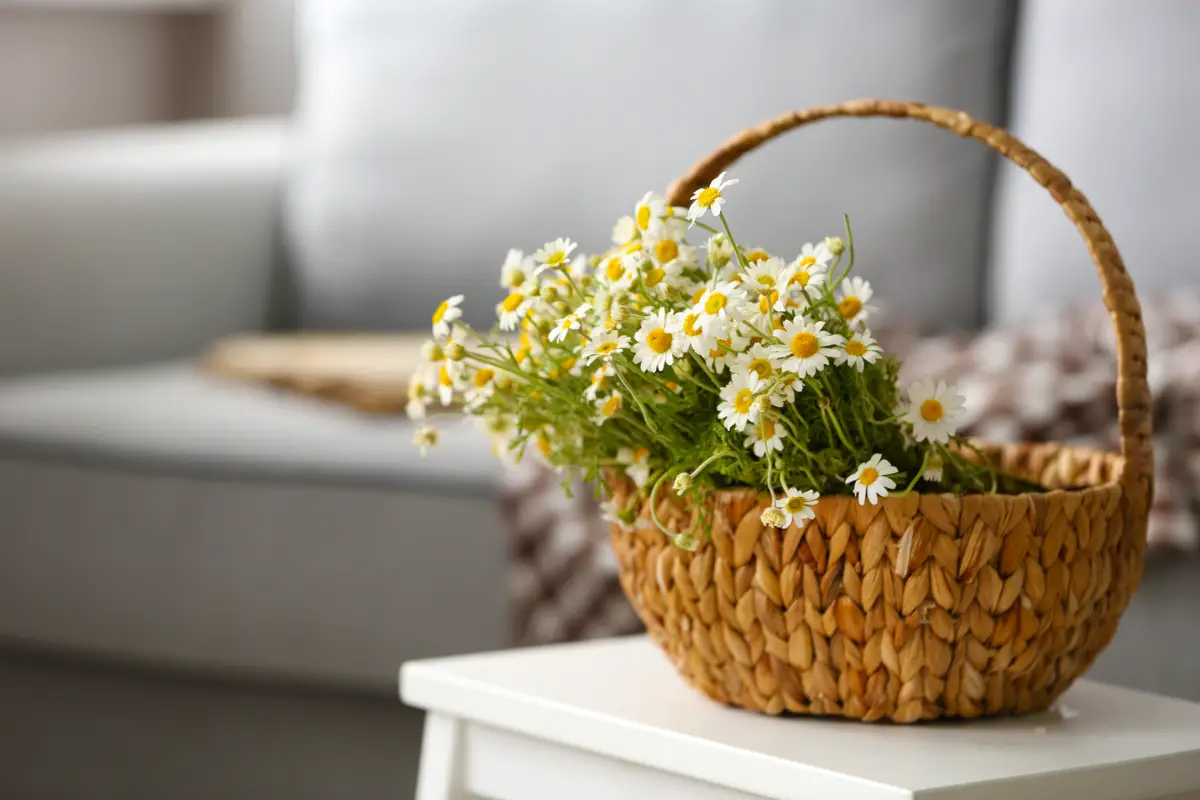
Chamomile is a sweet flowering herb with lovely daisy-like flowers, white petals, and yellow centres. Did you know there are two chamomile plant types: Roman and German? Despite their differences in growth patterns – Roman chamomile grows as a groundcover while German chamomile grows taller and bushier – both types produce similar blooms. Both varieties prefer more relaxed environments and partial shade, and they are drought-resistant Basilasy to care for. Chamomile is not only famous for its relaxing tea, but its daisy-like flowers also make a charming addition to any garden, adding a cheerful colour.
8. Rosemary
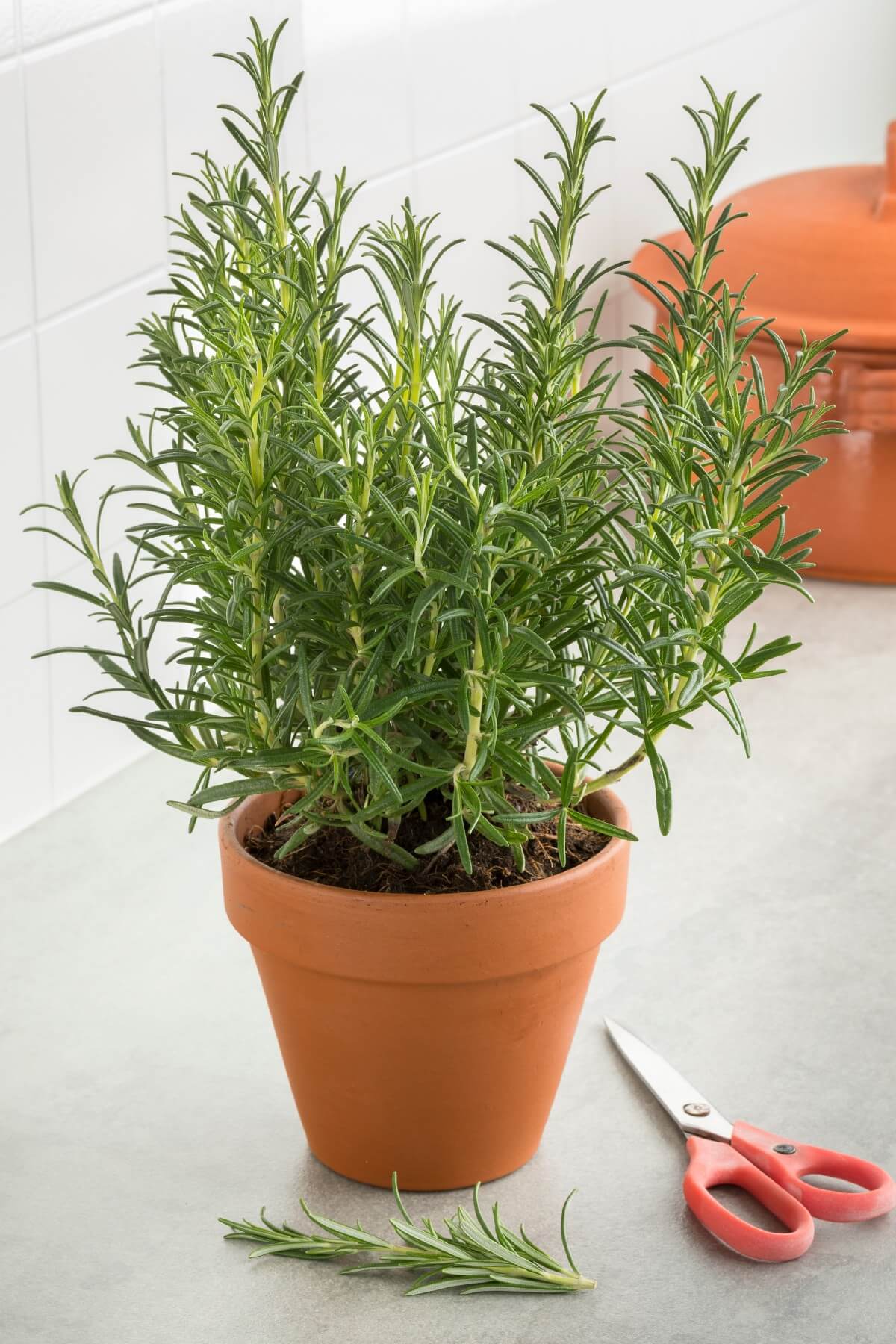
Get ready to elevate your cooking game with the flavorful and fragrant rosemary! This flowering herb has a striking appearance with dark green needle-like leaves that resemble miniature Christmas trees. The plant produces delicate flowers in the summer that are either purple or white, giving your yard a splash of colour. The herb is a unique addition to any garden due to the blue and purple blossoms that contrast wonderfully with the herb’s dark green leaves. However, rosemary requires special care during winter as it doesn’t tolerate frost. By providing the right growing conditions and maintenance, your rosemary plant will thrive and add a delightful fragrance and flavour to your home or garden.
9. Greek Oregano
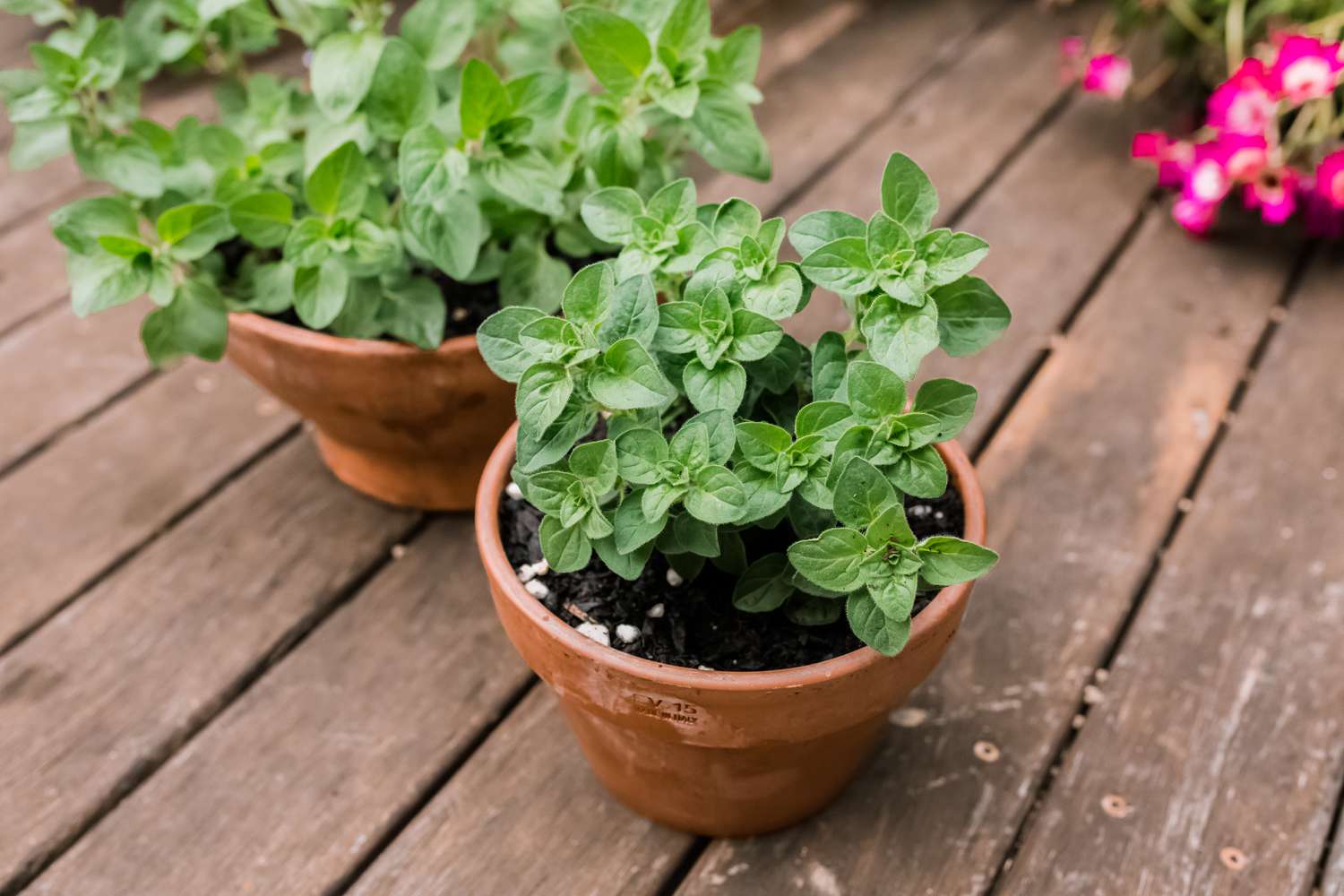
Greek oregano is an excellent choice for any herb garden. Its solid and distinctive aroma makes it a popular herb in many Mediterranean dishes. The plant is relatively low maintenance and can thrive in various growing conditions. This plant blooms in the summer, bringing colour to the yard with clusters of small white or pink flowers. Greek oregano has a potent, spicy flavour that complements foods made with tomatoes, meats, and vegetables. When growing it, be sure to pick a location with sunny, draining soil. Don’t overwater oregano because it can endure dry circumstances.
10. Thymes
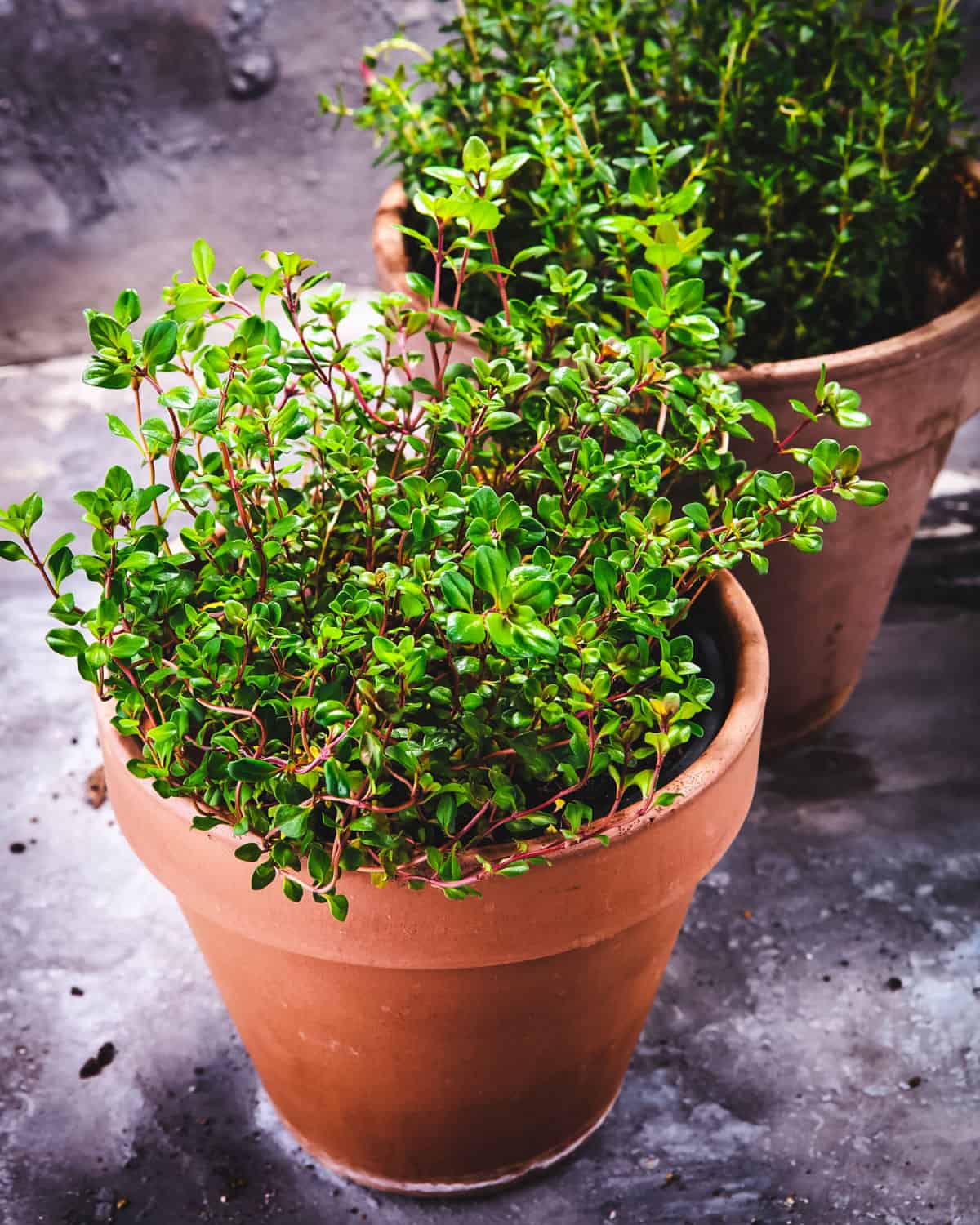
Thyme is a lovely addition to your yard, besides being a useful herb in the kitchen. This herb has flowers that can be either white or purple and give a splash of colour to any garden when they bloom. Thyme’s flowers look incredibly stunning when paired with those mentioned on this list. It is an excellent herb for people and pollinators alike. By adding thyme to your garden, you’re creating a space that supports wildlife and helps to maintain a healthy ecosystem. So, why not add some thyme to your garden and enjoy its beauty and benefits?
11. Verbena
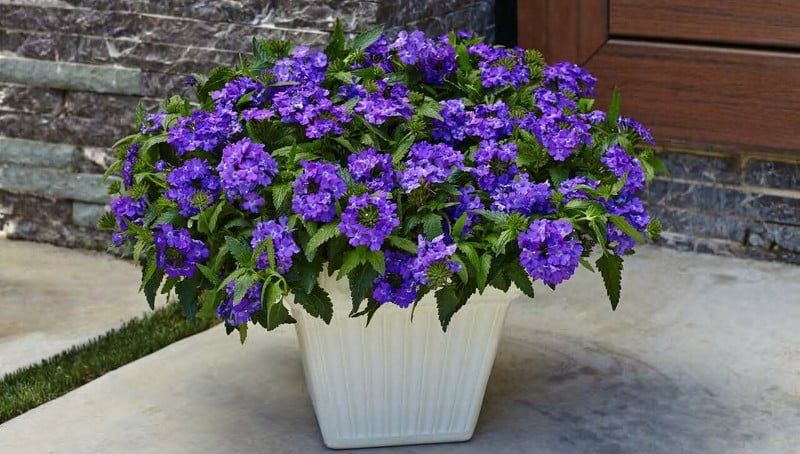
Verbena is a beautiful flowering herb in various colours, including purple, pink, red, and white. Its beautiful clusters of small blooms give any garden a touch of refinement with their ethereal appearance. Verbena is not only a visual treat, but it’s also simple to maintain. This herb grows best in full sun and soil that drains well, making it a great choice for rock gardens or as a border plant. It is an important component of any wildlife garden due to its capacity to draw pollinators like bees and butterflies. So verbena is a great option if you’re searching for a low-maintenance herb that can give your yard long-lasting colour.
12. Yarrow
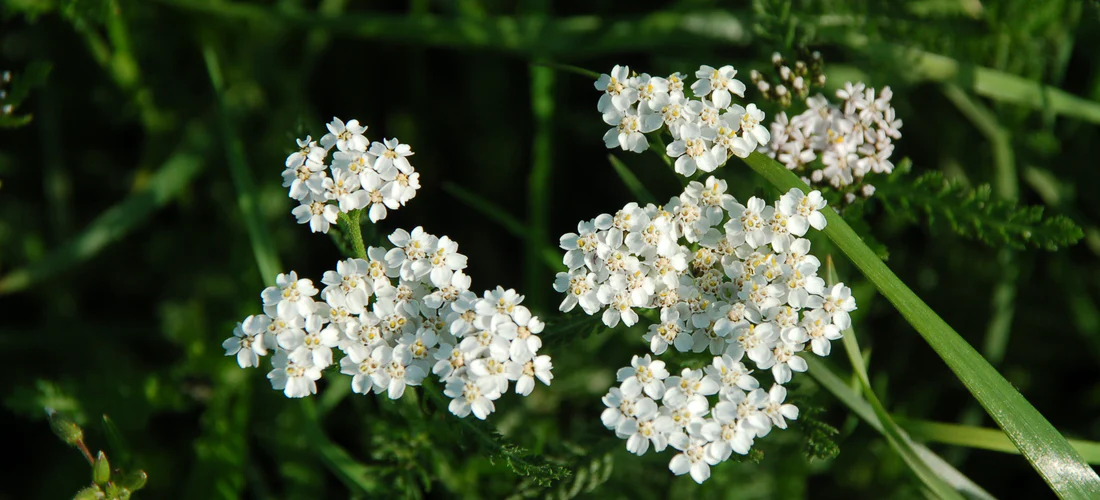
Yarrow is a lovely flowering herb that blooms from June to August and sometimes even beyond. A gorgeous flowering herb called yarrow blooms from June through August and occasionally even later. Any garden can be made better by yarrow’s exquisite white or pinkish blossoms, giving it a touch of the natural world’s beauty. It is a useful addition to your herb garden because it is also recognised for its therapeutic qualities. This herb does best in full sun and soil that drains well, making it ideal for rock gardens or as a border plant. One of the many lovely flowering herbs you may cultivate to bring colour to your garden is yarrow. To develop a garden that is as unique as you are, use your imagination and try out various kinds of herbs.
13. Mint
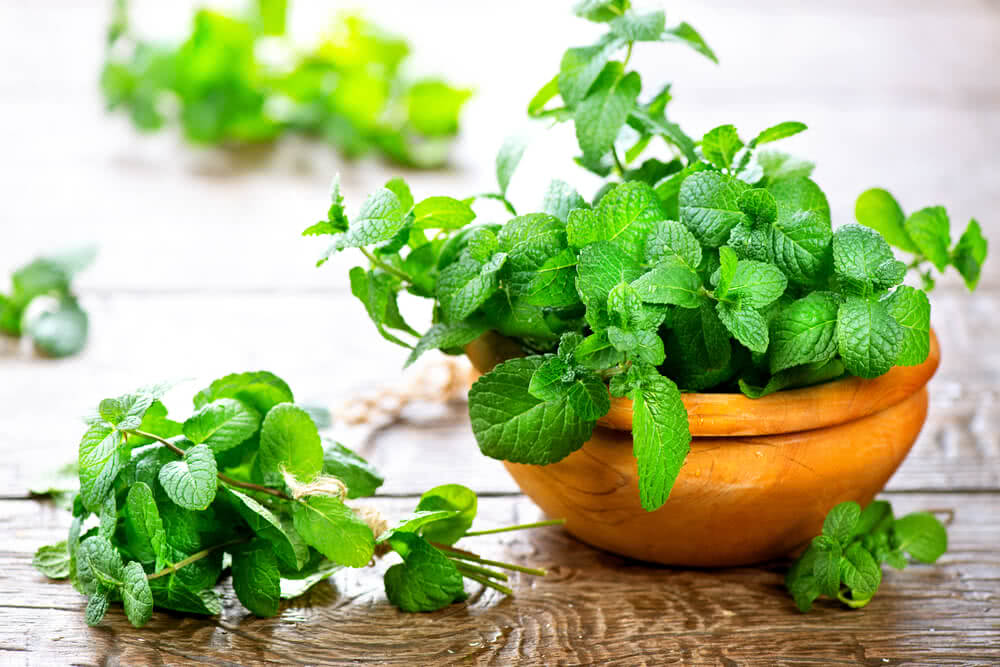
With its outstanding blossoms, mint is a multipurpose flowering herb that may brighten your garden and improve the flavour of your food. Mint is a wonderful companion plant because of its pest-repelling properties, fresh flavour, and eye-catching blossoms. It’s important to remember that mint can spread quickly and turn invasive if they are not properly controlled. You can pick from a variety of mint species, each with its own flavour and appearance.
14. Hyssop
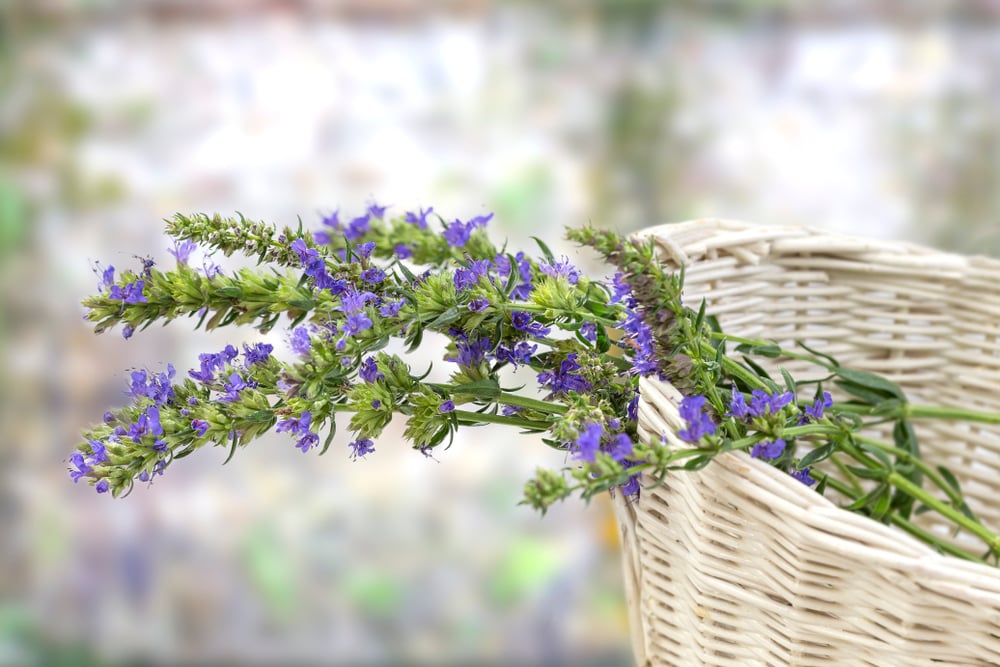
Hyssop is a herb that offers multiple benefits for humans and wildlife. Hyssop is an excellent choice for a flowering herb in your garden, not only for its beauty but also for its usefulness. Its purple or blue flower spires make it an attractive addition to any garden. Its flavour is a delicious blend of mint and sage, making it a versatile culinary herb. Hyssop also attracts pollinators like bees and butterflies, making it a valuable addition to any wildlife garden. Overall, hyssop is a must-have for any colourful and functional herb garden.
15. FeverFew
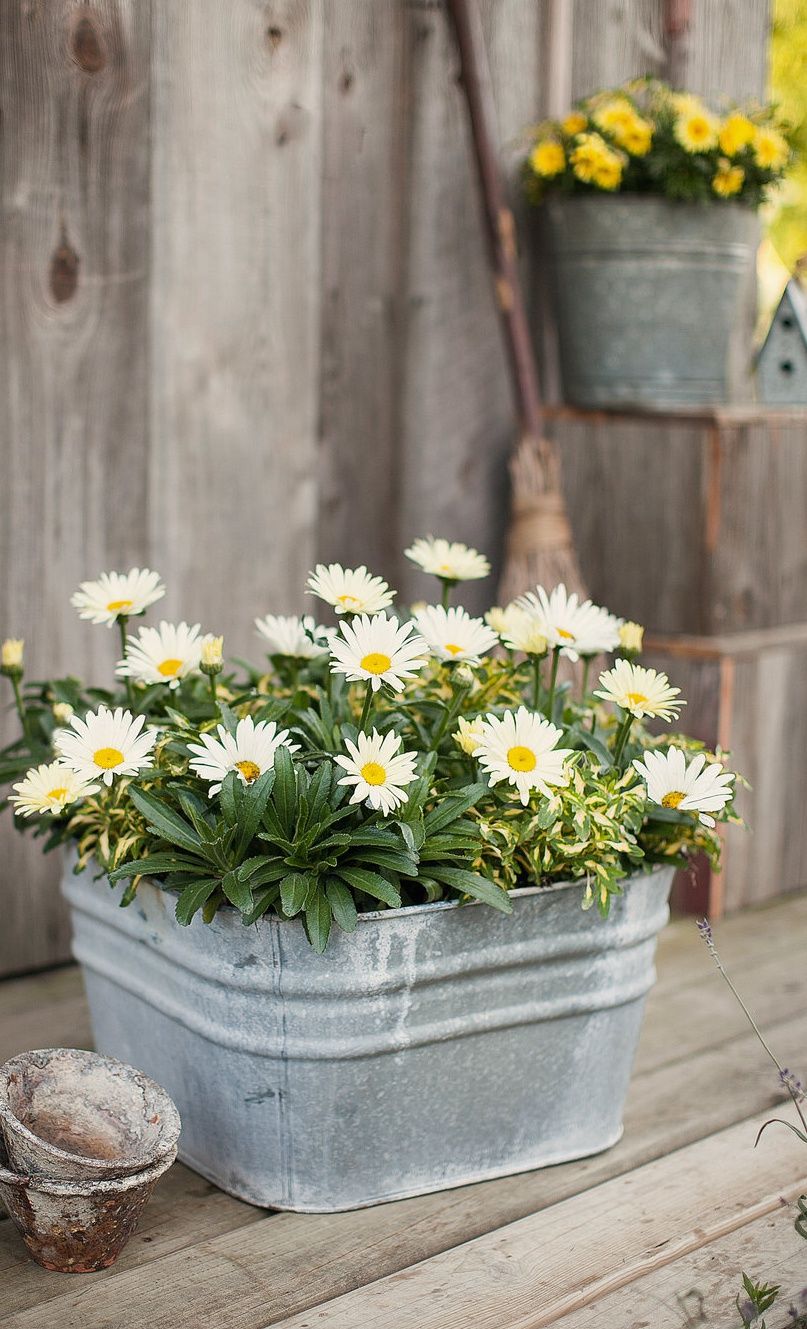
A herb with flowers that is a member of the daisy family – feverfew. This flowering herb is a wonderful addition to any colourful garden because of its lovely white and yellow flowers, which bloom in late spring or early summer. It prefers well-drained soil and a sunny location but can tolerate partial shade. The height of the plant reaches approximately two feet, generating bunches of daisy-like flowers on elevated stems. It also attracts pollinators like bees and butterflies to your garden. People also value feverfew for its medicinal properties. Overall, feverfew is a versatile and attractive herb that can provide a range of benefits to your garden and your health.
16. Sweat Peas
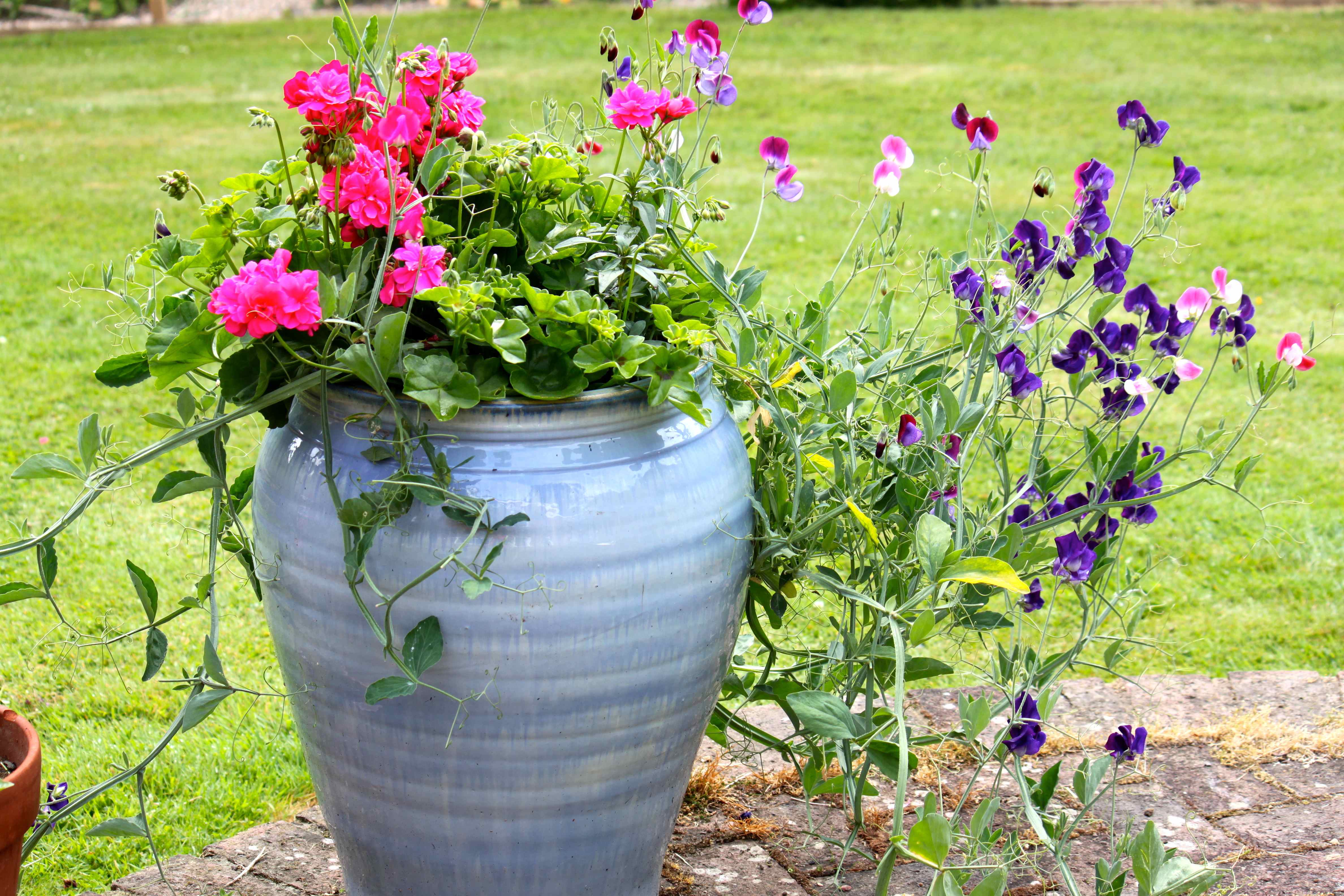
Sweet pea is a flowering herb commonly grown in Gardens for their beautiful and fragrant flowers. Lovely pea flowers come in various colours, including pink, white, red, blue, and purple. They are often bi-coloured or have contrasting eyes. They have a delicate, sweet fragrance that is particularly noticeable in the evening, making them a popular choice for planting near outdoor seating areas. Whether you’re growing them for their beauty, scent, or practical uses, sweet peas will surely delight you and your garden visitors.
17. Spearmint
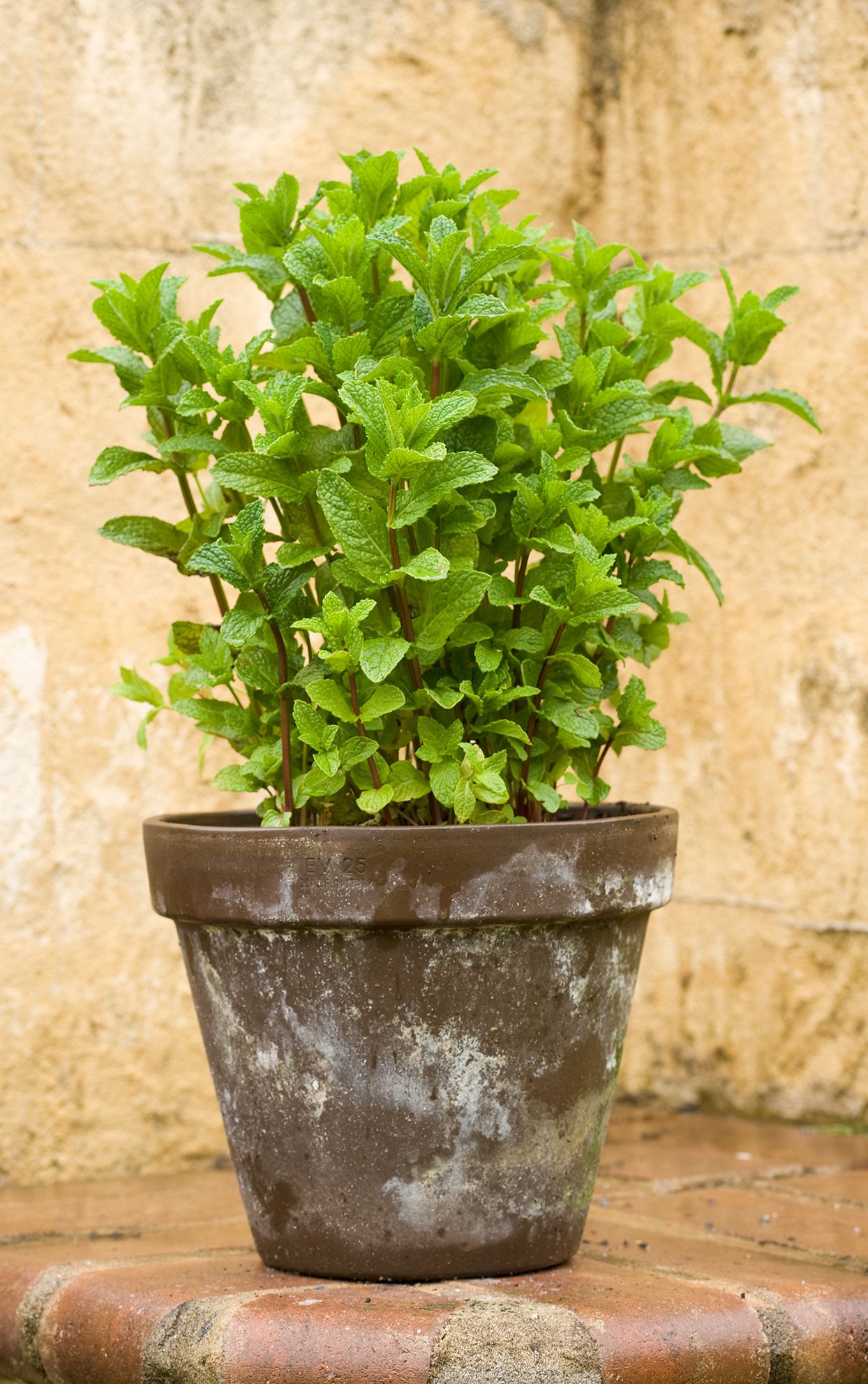
Your yard can benefit from the delightful flavour and aroma of spearmint plants. It features lovely pink or purple blooms that bloom in late spring or early summer. The flowers aren’t particularly stunning, but they nonetheless give your yard a welcome splash of colour. However, spearmint’s leaves are its finest feature. With its minty essence and aroma, you can cook or brew a cooling tea. This flowering herb has some health benefits, like better digestion, lower stress levels, and enhanced sleep.
18. Nasturtiums
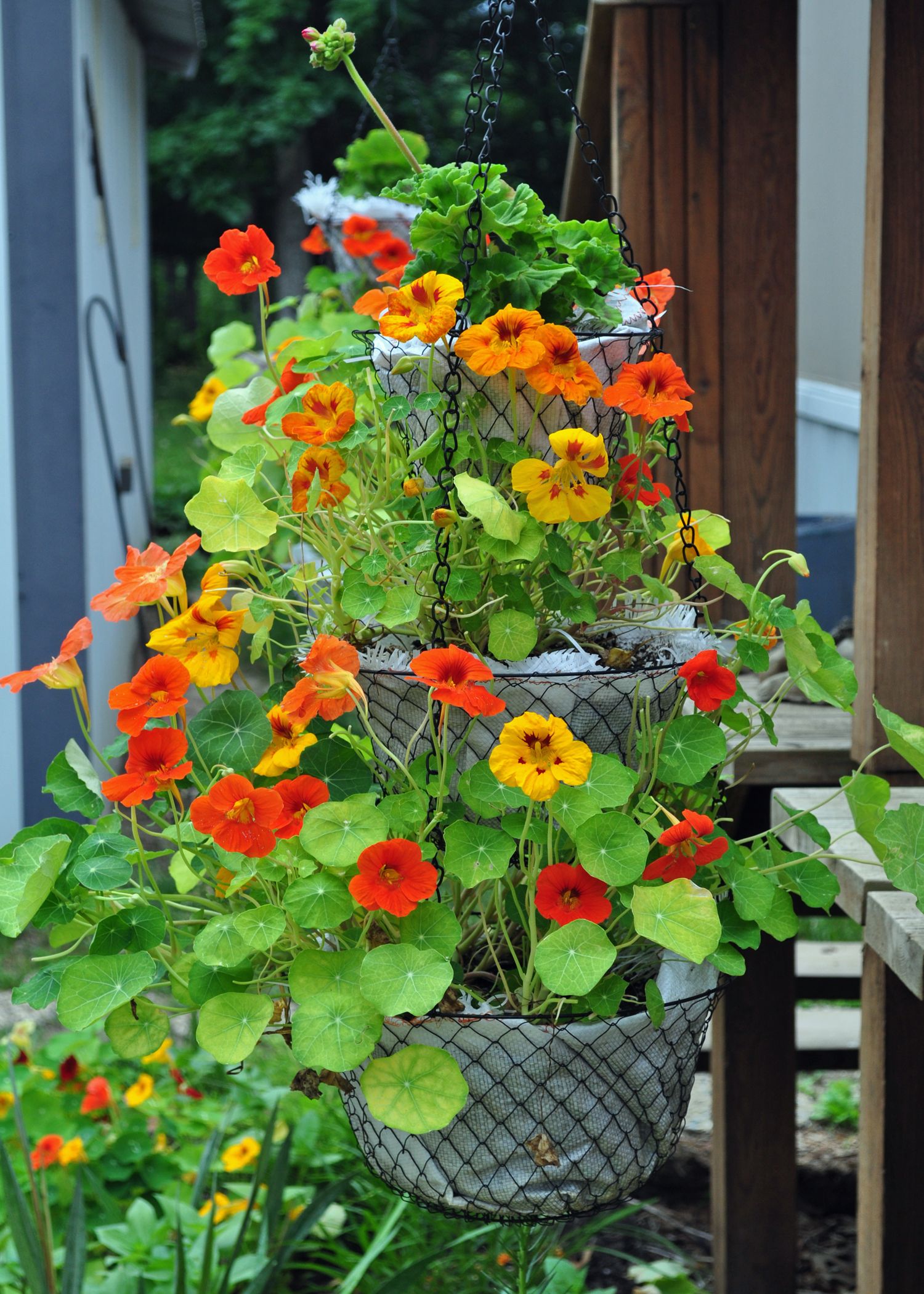
Sometimes you need a flowering herb which can add a pop of colour to your garden and spice up your meals too. Nasturtiums are to your rescue. These are available in an array of shades, from fiery reds and oranges to sunny yellows and creamy whites. Their round leaves depict eye-catching patterns and striations. The leaves and flowers are edible so that you can enjoy their flavour all season long. It’s a perk for any newbie in gardening, as these herbs are easy to grow.
19. Sage
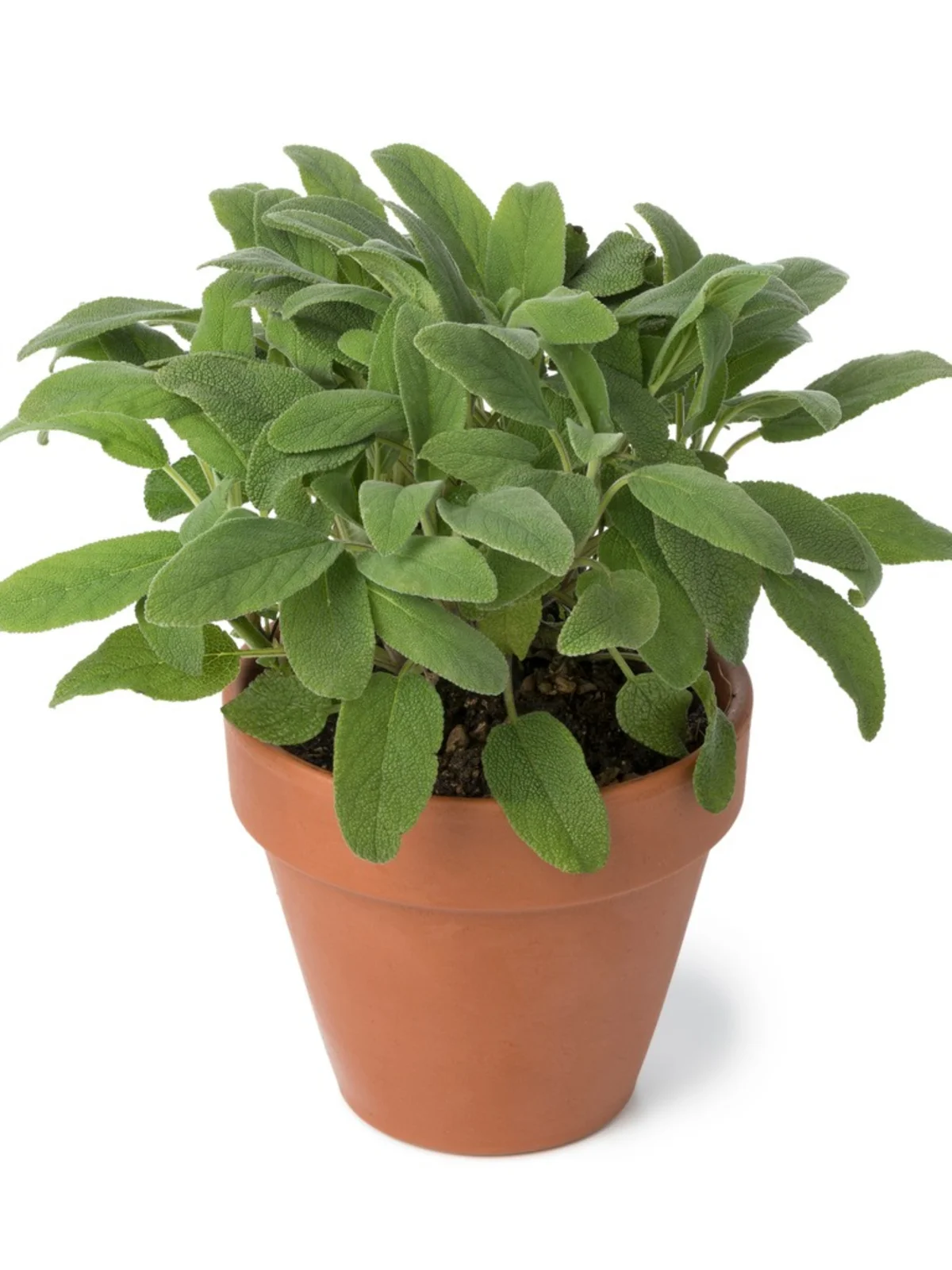
Sage is a beautiful flowering herb that can add beauty and flavour to your garden. What makes it different are its soft grey-green leaves and delicate flowers. These bloom in late spring to early summer in shades like blue, purple, pink, or white. Sage is a herb which is beautiful and tasty! You can elevate the flavours of your dishes with their leaves which have a warm, earthy aroma and can be used in many dishes, such as meat dishes, stews, and soups. It is surely going to grab a spot in your garden and make it more beautiful.
20. Fennel
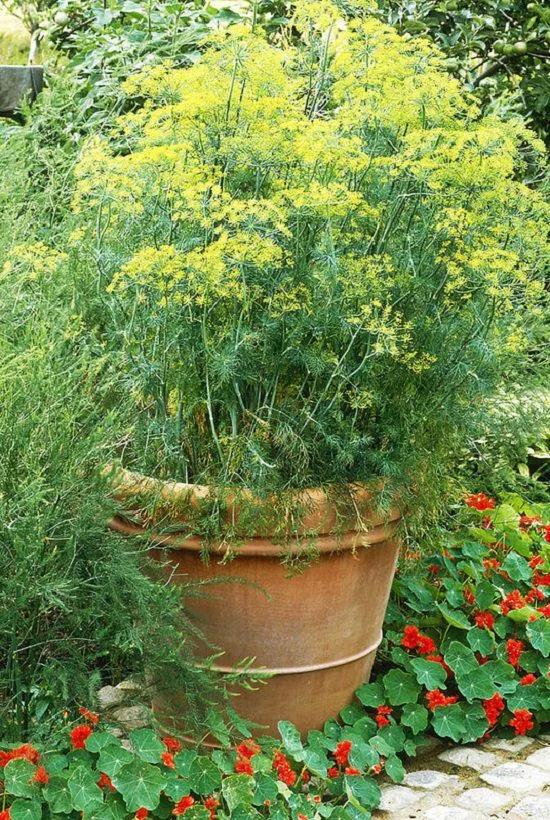
Fennel is a pretty and tasty herb that can be a great addition to your garden. Its green, feather-like leaves and yellow flowers make it a standout plant in any garden during summer. But fennel is not just a pretty face – it’s also delicious! You can use different parts of this flowering herb to add a unique and tasty flavour to your dishes. You can add the bulb to salads or make soups and stews. Fennel is a versatile herb that can add beauty and flavour to your garden and dishes!
21. Zinnias
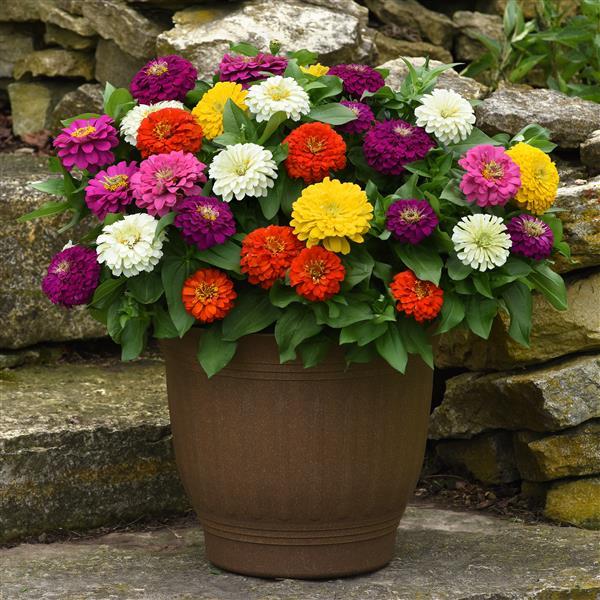
Zinnias are stunning and colourful flowering herbs that give your outdoor area life and brightness. They bloom in colours like pink, orange, yellow, red, and white. These herbs look like daisy flowers. Zinnias are a terrific way to make your garden vibrant and lovely during the warmest part of the year because they can reach heights of up to three feet and bloom throughout the summer. These plants are great for both novice and expert gardeners because they are easy to grow and don’t need much maintenance. It is the best choice for a pollinator garden as it attracts bees and butterflies.
22. Anise
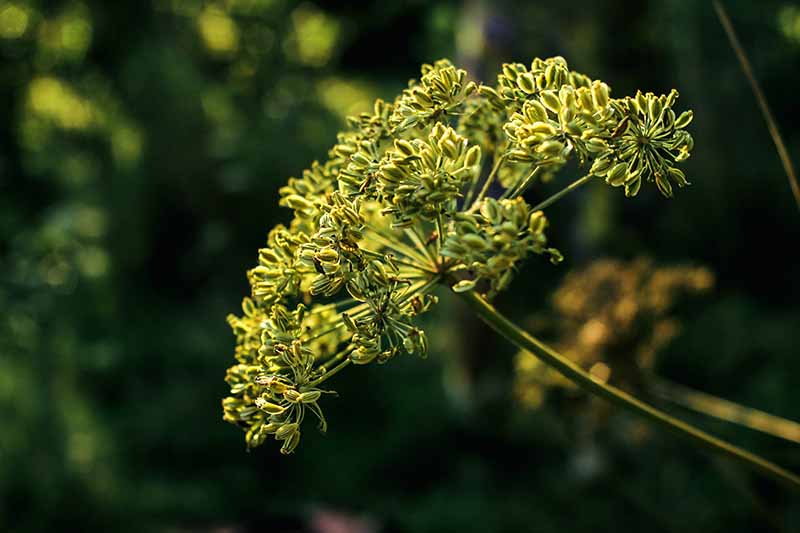
Closing Thoughts on Cultivating a Bountiful Garden of Blossoming Herbs
To wrap it up, growing flowering herbs in your garden can enhance both the aesthetics and practicality of your outdoor environment. The lively and beautiful blossoms and foliage that these herbs produce offer some useful properties that can be used in cooking or medicine.
Every gardener may be experienced, or a newbie can enjoy gardening with this variety of options which includes well-known kinds like chamomile and lavender as well as lesser-known ones like hyssop and spearmint. You may transform your garden into a colourful, sweet-smelling haven that will amaze both you and your guests by placing these herbs in strategic locations throughout it. The advantages don’t end there; many of these herbs are also prized for their capacity to draw pollinators, making them an environment-friendly addition to your garden.
Why not try a few different types and see what magic these lovely and useful flowering herbs may work in your garden?

